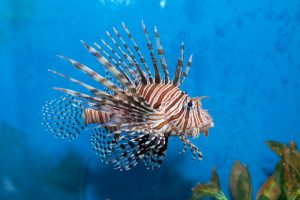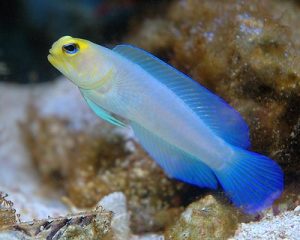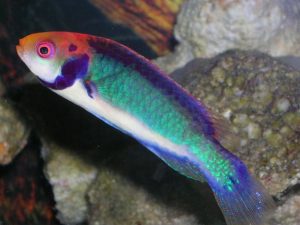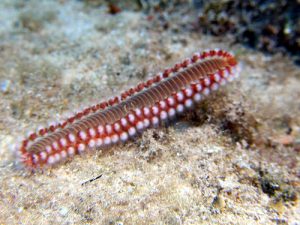Under the tropical waters of Panama lies a plethora of amazing fish and coral reef! While scuba diving or even just cruising along the sandy beaches, you can see the colorful arrangement of amazing marine life throughout the Panama Sea.
 1. Parrot Fish
1. Parrot Fish
These colorful fish ranging up to 4 feet have beak-like jaws and closely packed teeth in order to feed on algae and coral reef that they then excrete as a white sand throughout the ocean floor. Parrot fish are hermaphrodites and can be difficult to classify due to their change in color as they transform from female to male turning from light to dark and in an array of different colors and patterns. Their change in gender is on-set after laying their eggs and reaching a certain level of maturity resulting in their transformation. Parrot fish also create their own natural mechanism of defense against predators producing a cocoon surrounding them formulated from mucus to shield off any unwanted guest. You are bound to see many of this vibrant fish munching on the reefs in the Caribbean!
 2. Trumpet Fish
2. Trumpet Fish
The trumpet fish gets its name from its long lanky body that hangs vertically throughout the water in close resemblance to a sea whip with a mouth that can open wider than the diameter of its own body. Trumpet fish are also able to form their bodies in the shape of an “S” in order to make an aggressive lurch towards their prey. They are typically seen in brown, green, or yellow tones with dark specs floating with herds of other fish as a way to conceal themselves using their camoflauge chemicals. During a dive to the ship wreck you can find these long-snouted friends!
 3. Lion Fish
3. Lion Fish
Lion fish also known as Pterois have become an invasive species along the Caribbean Sea becoming more prominent in the last 5 years along the Atlantic Shore as well. They have the ability to deter predators using venomous spines inflicting mild to serious pain. Lion fish have a an accelerated reproduction rate that enables them to multiply quicker than many other species. Specifically female lion fish are able to produce at a rate of 2 million eggs per year rapidly spread by ocean currents.. They prey on approximately 70 species of fish, many which are important to the ecology of the sea and have been known to reduce their fish prey population by 90% in the Caribbean. They have very few natural predators and generally feed on small fish and invertebrates. Be on the lookout for this eccentric red lion fish swimming through the Panama!
 4. Southern Stingray
4. Southern Stingray
The southern stingray resides in shallow tropical waters usually in a dark brown or gray color able to camouflage in the sand where they spend most of their time. Female stingrays can grow up to six feet weighing in at a max of 214 pounds! Their method of defense is their long whip like tail called a barb that is only used if they are provoked or feel threatened. The stingray has eyes on the top of its head and spiracles which allow it to take in oxygenated water which is expelled from its underside. Southern stingrays eat small fish such as teleost and crustaceans by grazing along the ocean floor using their strong sense of smell and touch.
 5. Panamic Sergeant Major
5. Panamic Sergeant Major
A panamic sergeant major is part of the damselfish species characterized by five black bars on a yellow background similar to an army sergeant majors chevron. While this fish is breeding the males will turn a dark blue coloration to attract females or while protecting their eggs. They feed on zooplankton, benthic algae, and small invertebrates and usually live around rock and coral reefs. They can sometimes be mistaken for the Graybar Grunt Haemulon who has similar striped patterns.
 6. Jawfish
6. Jawfish
The Panamanian jawfish are similar to the Sergeant Major being that the posterior half of the male’s body turns dark to attract females during mating season. Jawfish have elongated bodies with facial features of their head, mouth, and eyes relative to their body. They have a long dorsal fin with 9-12 spines typically rounded or pointed and reside in burrows they construct in the sandy layers with their mouth.
 7. Wrasse
7. Wrasse
Wrasse can come in up to 500 different species mostly residing in tropical seas ranging from 5 centimeters to 6.5 feet in length. Typically wrasse are carnivorous and have long slender bodies with thick lips and smooth scales with a mouthful of protruding canine teeth for feeding on smaller invertebrates. There is a particular species of wrasse called the cleaner wrasse that lodges inside the mouths of larger fish and acts as a cleaning apparatus inside clearing out dead tissues or parasites that lurk inside of other fish. Wrasse are also hermaphrodites and have the ability to change from female to male depending on the stages of reproduction. Wrasse can be seen in various colors, patterns, and shapes, weaving in and out of the Caribbean!
 8. Fireworm
8. Fireworm
The fireworm on average lays between 5-10 centimeters with hollow bristles that produce a venom can penetrate the flesh just by a small touch. Coming in contact with these vibrant worms could cause a strong sensation of pain resonating throughout the body for longer than expected! There are an abundance of these worms around coral reefs, lying beneath stones or in muddy bottoms usually occurring at around 40 feet in depth. Fireworms have similar body structure to earthworms and bristle worms with identical parts of the body leading all the way up to the head. These worms are fascinating to look at throughout the ship wreckage in Panama but steer clear of touching these fiery friends!